Reproduction of Japanese quince, care features, beneficial properties of the fruit
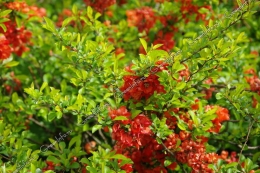
Japanese Quince - a beautiful ornamental shrub that attracts a lot of attention from early spring until autumn.
Gardeners love it for its presentable appearance and beneficial properties of the fruit, so every year more and more summer residents try to grow this overseas guest on their plots and gardens.
Let's look at how Japanese quince is propagated and find out what kind of care the plant requires.
Content:
- Japanese quince, plant description and photo
- Chaenomelis varieties
- Reproduction of Japanese quince by cuttings and seeds, dividing the bush, branching
- Features of care
- Japanese quince fruits - what to do with them, what goodies to prepare
- Beneficial properties of Japanese quince, use in folk medicine
Brief description of Japanese quince
Quince is a plant belonging to the Rosaceae family. Japan is considered its homeland, and in its natural habitat it is found in the wild in Korea, China and some parts of Japan.
It is distributed along the banks of rivers, lakes, in clearings and on mountain slopes, and forms dense thickets. This is a showy shrub about 3 m in height with dark shiny foliage, with sharp spines on the branches.
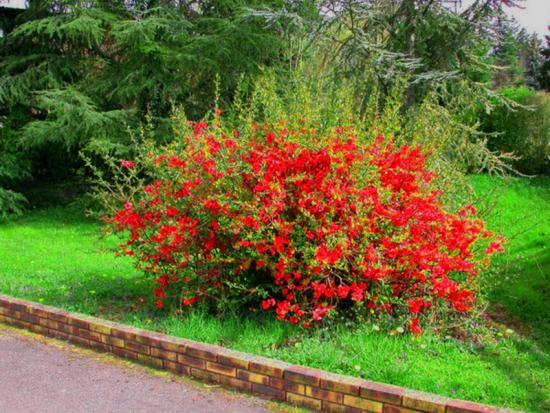
The flowers are large, up to 3 cm in diameter, available in racemes and single, red, pink, orange and white. Bloom The bush has a long life, almost 2 months, after which fruits of a yellow hue are formed, similar to apples or pears with a diameter of 3 - 4 cm.
The weight of such a fruit is 30-120 grams, depending on the variety. The pulp is very dense, not juicy, slightly sweet, astringent. Flowering occurs in May - June, and fruiting occurs in September for plants 3 - 4 years old.
On top of each fruit there is a small wax coating that protects them from spoilage. In the photo, Japanese quince looks no less impressive than in reality.
Varieties of Japanese quince
There are quite a lot of varieties of Chaenomelis obtained by breeders, more than 500, but the most common and cold-resistant, suitable for our climate are the following.
Vitamin
The variety has high cold resistance, is not spreading, and there are almost no sharp thorns on the branches. The fruits are yellow, juicy with soft flesh.
Fragrant
The shrub of this variety is low-growing, about 120 cm in height, and is frost-resistant. The flowers are salmon-colored, and the fruits are small, 50-60 g, pear-shaped, and have a pleasant sweet aroma.
Autumn (large-fruited)
A low shrub, resistant to frost and most diseases and pests. Fruits are 60-70 g, yellowish-greenish.
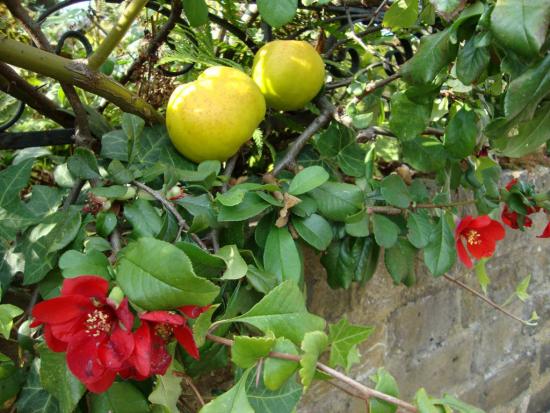
Cameo
Variety frost-resistant, the flowers are very decorative: double with coral and pink tints.
Nika
The fruit bush has large false apples, weighing up to 80 - 100 grams, have a subtle sweet aroma, are well preserved and resistant to diseases and pests.
Nikolay
An easy-to-care variety that produces a stable annual harvest. The fruits are small, 40-45 gr.
Reproduction of Japanese quince by cuttings, seeds, layering
Reproduction of the Japanese beauty quince can be done in several ways.
Seeds
Seeds from ripe fruits are planted in prepared containers with soil at the very beginning of spring. The containers are covered and placed in a warm place.The first shoots should appear in 35 - 45 days. From this moment, the shelter is removed, the young plants dive into separate pots.
For a permanent place seedlings transplanted at the end of spring. Plants 1 and 2 years old are carefully covered for the winter.
The disadvantages of this method of propagation are the lack of varietal characteristics; seedlings are often used as rootstock.

Cuttings
For Cherenkov take strong healthy side shoots with 1 - 2 internodes. The best time for taking cuttings is considered to be the beginning of summer in the morning or evening cool hours.
For quick germination, cuttings are kept in a solution with root or other preparation. Cuttings are planted in closed ground (greenhouses) in soil consisting of peat and coarse sand (1:3). Under favorable conditions, rooting occurs within 40 days.
In the autumn, the strengthened cuttings can be planted in open ground for a permanent habitat.
Dividing the bush
This method is less labor-intensive, but also the most effective. In the spring season, from 1 adult bush you can get up to 5 - 6 young plants.
From the formed root shoots, select shoots with a thickness of at least 0.5 cm and a length of 12 - 15 cm with good roots.
Layerings
Long bendsthat lie on the ground can give good roots; gardeners take advantage of this property. In spring, the soil around the bush is watered and loosened well. Young suitable shoots are pinned to the soil.
In the summer, the young shoot must be looked after: watered, hilled, and by autumn the first roots appear on it, after which the cuttings are cut off from the mother bush and transplanted to a permanent place of cultivation.
Features of care
Young, healthy seedlings are used for planting chaenomelis.Plants with a closed root system are ready for planting in both spring and fall. Closer to the summer season, you should not buy bushes with blossoming flowers and foliage.
Before planting, a plant with an open root system is carefully inspected: the roots must be alive, elastic, and without visible damage.
The ideal place for planting is well-lit areas, because even the slightest darkening reduces the yield and the number of flowers on the bush.
When growing chaenomelis, you should follow some care rules.
Soil preparation
The soil for Japanese beauty must have good drainage. Ideal soils: soddy-podzolic and slightly acidic loams. Peat and alkaline soils are not suitable for growing.
The planting hole is prepared in advance; if planting is scheduled for spring, then in the fall, and vice versa. All weeds are killed and the surface of the area is kept free of them. The optimal pit size is considered to be 50 cm in diameter by 50 cm in depth.
The excavated soil from the hole is mixed with leaf soil and sand, add peat and rotted manure. Mineral fertilizers include potassium and phosphorus (40 g per 1 m2). The mixture turns out nutritious and loose.
Bushes are planted at the very beginning of spring, after the snow has melted, or during leaf fall in the fall.
When planting, maintain a distance, it should be at least 50 cm.
It is advisable to plant several plants at once. Cross pollination significantly increases the number of flowers and ovaries on the bush.
The root collar cannot be buried; it must be flush with the ground.
The plant does not like transplants; a properly planted plant will not require them.
Loosening the soil
Loosening is especially important for young plants.
It is necessary to weed the tree trunk circle and loosen the soil in it as needed.
Mulching
A great way to retain moisture in the soil. As mulch sawdust, peat, and fallen leaves are used.
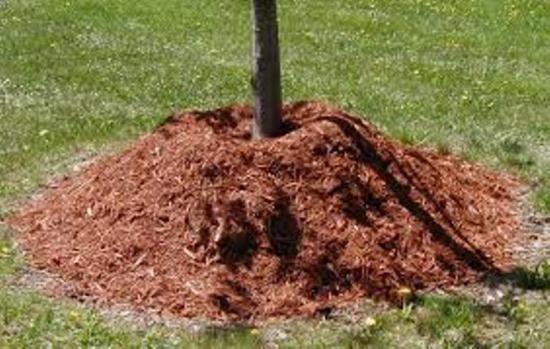
It is laid out on the ground in May around a bush with a layer thickness of 5 cm. And in the fall - after the established cold snap.
Top dressing
In the first few years it is not required; the embedded substances in the pit and mulch are sufficient. After 3 - 4 years in the spring, organic and mineral fertilizers are laid out on the surface of the tree trunk ring.
Preparing for the winter season
To protect against cold and frost, the bushes are covered with spruce branches or dry fallen leaves. You can buy spunbond or lutrasil for this purpose in specialized stores. Small bushes can be covered with cardboard boxes.
Bush shaping and pruning
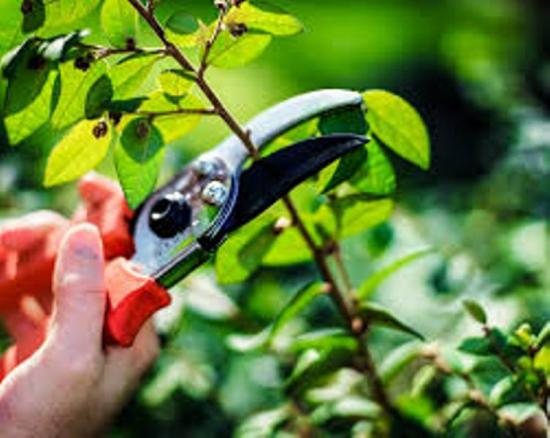
Henomelis is well tolerated pruning and, if necessary, it is given any desired shape. When working, do not forget to wear thick gloves so as not to injure your hands on sharp thorns.
In the spring, sanitary pruning is done: dried, broken branches are removed.
Plants from 5 years of age can be trimmed to give shape:
- To maintain a beautiful appearance, shrubs are pruned annually, removing all branches that thicken the crown.
- The most necessary shoots are located in the center and grow horizontally.
- Vertical and lying on the ground shoots are cut off.
- After reaching 8 years, the bush is rejuvenated: all branches older than 4 - 5 years are cut off and the thinnest shoots are removed.
Protection from pests and diseases
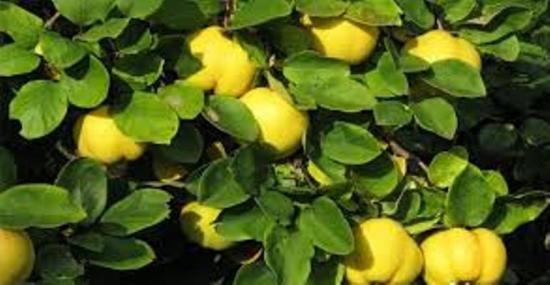
Pests do not often settle on chaenomelis, but if this happens, treatment with chemicals before the first buds open can easily eliminate them.
The main thing is prevention, that is, timely pruning, removal of dry branches and bark. Sometimes signs of fungal diseases appear on the crown. They arise due to low temperatures and high humidity.
This problem is combated with soap sprays with the addition of copper sulfate, or with folk methods (onion peel decoction).
Japanese quince combines beautifully with spring flowering shrubs, evergreens and herbaceous plants, adding a special accent to any garden or area. Henomelis is quite undemanding in terms of soil composition and watering, but reacts to the slightest darkening by reducing yield and slowing growth.
Japanese quince fruits, what to do with them, what goodies to prepare
Many inexperienced summer residents, having received a fruit harvest chaenomelis, wondering: what to do with them?
The choice of processing options is considerable; the aromatic unique fruits are suitable for: manufacturing:
- tinctures
- liqueurs
- syrups

They are used in cooking, for preparing:
- candied fruits
- jam
- juice
- jelly
- compote
Japanese quince - beneficial properties, use in folk medicine
Since the fruits contain a large amount of iron, they are a valuable product for those who suffer from anemia and exhaustion.
They have a fixing property and are also an effective hemostatic agent.
Infusions and decoctions are used as:
- diuretics and choleretic drugs,
- means to accelerate tissue regeneration
- antiulcer agent.
Taking quince helps normalize the gastrointestinal tract.
You can get even more information about caring for quince by watching the video:

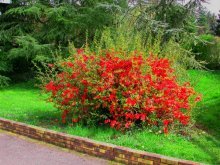
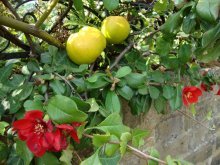
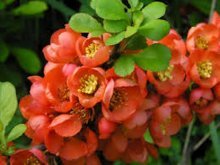
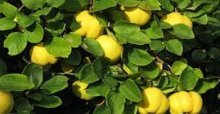
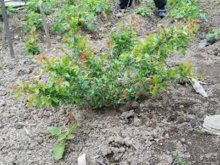
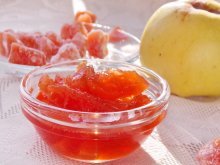
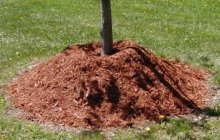
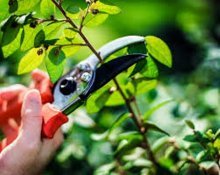
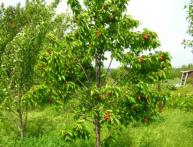
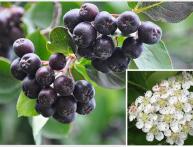
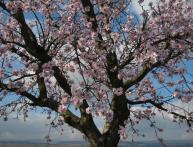
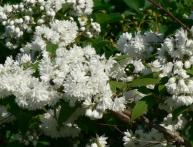
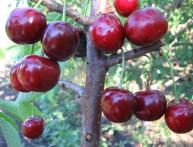
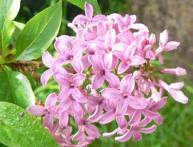
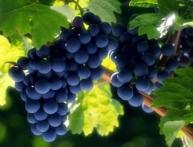
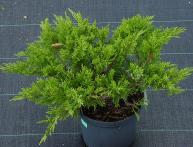
Comments
We propagate this decorative quince for hedges by layering, just like currants and gooseberries.It's comfortable. We dig up the rooted shoot and, together with a lump of earth, transplant it to the right place.
Quince has always grown in our dacha; we periodically update the bushes, of course. Very tasty and healthy jam made from it. If the fruits are hard, then you can boil them a little and eat them with sugar or simply. The fruits are rich in vitamins, which will strengthen your immune system throughout the winter.
We love quince very much; it is an excellent fruit from which you can make a lot of desserts. Our Nikolai variety is not bad, the fruits are tasty. They propagated by cuttings, and it worked out pretty well.